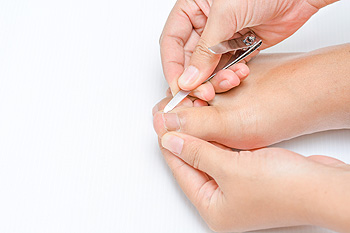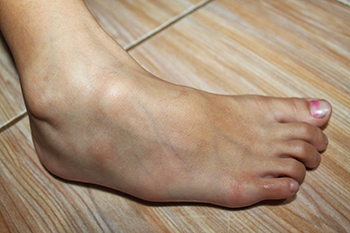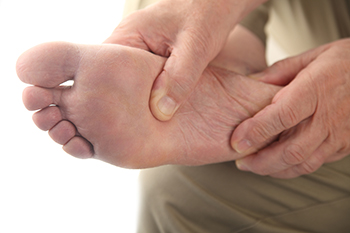Connect With Us
Blog
Items filtered by date: March 2023
Working Out With Broken Feet

When someone breaks or fractures their feet, it can significantly limit their motion and mobility. Therefore, many patients often wonder how they can perform daily exercise routines while suffering from a broken foot. It is important to always listen to the advice of your trusted medical professional, such as a podiatrist, who can tell you what activities are still permissible. For example, your podiatrist might tell you that if your condition is not too severe, swimming might be a permissible activity to engage in. Also, your podiatrist might inform you that core-strengthening exercises that do not put pressure on your feet can still be performed. If you have a broken foot and want to learn more about your exercise options, it is suggested that you schedule an appointment with a podiatrist today.
Exercising your feet regularly with the proper foot wear is a great way to prevent injuries and build strength. If you have any concerns about your feet, contact one of our podiatrists from Foot & Ankle Surgical Group. Our doctors can provide the care you need to keep you pain-free and on your feet.
Exercise for Your Feet
Exercise for your feet can help you gain strength, mobility and flexibility in your feet. They say that strengthening your feet can be just as rewarding as strengthening another part of the body. Your feet are very important, and we often forget about them in our daily tasks. But it is because of our feet that are we able to get going and do what we need to. For those of us fortunate enough to not have any foot problems, it is an important gesture to take care of them to ensure good health in the long run.
Some foot health exercises can include ankle pumps, tip-toeing, toe rises, lifting off the floor doing reps and sets, and flexing the toes. It is best to speak with Our doctors to determine an appropriate regimen for your needs. Everyone’s needs and bodies are different, and the activities required to maintain strength in the feet vary from individual to individual.
Once you get into a routine of doing regular exercise, you may notice a difference in your feet and how strong they may become.
If you have any questions please feel free to contact our office located in Henderson, NV . We offer the newest diagnostic and treatment technologies for all your foot and ankle needs.
Ingrown Toenails and Pus

An ingrown toenail can develop when the side of the nail essentially grows into the skin surrounding the toenail. Not only can this condition be unsightly, it can also cause a patient discomfort and pain. Ingrown toenails have an interesting relationship to pus that patients ought to be familiar with. Pus can sometimes ooze from an ingrown toenail if there is an infection. In these circumstances, the pus may appear to be a green or yellow color. Pus can therefore be a helpful indicator that something might be wrong with your ingrown toenail. Infections are nothing to take lightly, and if you believe you have one, seek out medical attention. If you are someone that struggles with a case of ingrown toenails, it is suggested that you contact a podiatrist today for treatment and advice.
Ingrown toenails can become painful if they are not treated properly. For more information about ingrown toenails, contact one of our podiatrists of Foot & Ankle Surgical Group. Our doctors can provide the care you need to keep you pain-free and on your feet.
Ingrown Toenails
Ingrown toenails occur when a toenail grows sideways into the bed of the nail, causing pain, swelling, and possibly infection.
Causes
- Bacterial infections
- Improper nail cutting such as cutting it too short or not straight across
- Trauma to the toe, such as stubbing, which causes the nail to grow back irregularly
- Ill-fitting shoes that bunch the toes too close together
- Genetic predisposition
Prevention
Because ingrown toenails are not something found outside of shoe-wearing cultures, going barefoot as often as possible will decrease the likeliness of developing ingrown toenails. Wearing proper fitting shoes and using proper cutting techniques will also help decrease your risk of developing ingrown toenails.
Treatment
Ingrown toenails are a very treatable foot condition. In minor cases, soaking the affected area in salt or antibacterial soaps will not only help with the ingrown nail itself, but also help prevent any infections from occurring. In more severe cases, surgery is an option. In either case, speaking to your podiatrist about this condition will help you get a better understanding of specific treatment options that are right for you.
If you have any questions please feel free to contact our office located in Henderson, NV . We offer the newest diagnostic and treatment technologies for all your foot and ankle needs.
Dealing With Mallet Toe

One of several common toe deformities is mallet toe. Common causes of mallet toe include the imbalance of muscle and bones, where the toe bones are too short and the muscles too weak. This imbalance forces the tip of the toe to curl under. Mallet toe commonly affects any of the three middle toes of the foot. It can also be caused by an injury, arthritis, and improperly fitting footwear. People who wear high heels with narrow toe boxes are more at risk for developing mallet toe. Other factors include genetic makeup and toe length. If the 2nd and 3rd toes are longer than the big toe, mallet toe may result. In some cases mallet toe problems can be eased simply by changing the type of shoe you wear, but in more severe cases, surgery to release the tendon and straighten the toe is an option. Recovery time for this type of surgery can take up to two months. If a mallet toe is giving you problems, it is suggested that you make an appointment with a podiatrist for an examination and a treatment plan.
Toe pain can disrupt your daily activities. If you have any concerns, contact one of our podiatrists of Foot & Ankle Surgical Group. Our doctors can provide the care you need to keep you pain-free and on your feet.
What Causes Toe Pain?
Most severe toe pain is caused due to a sports injury, trauma from dropping something heavy on the toe, or bumping into something rigid. Other problems can develop over time for various reasons.
Toe pain can be caused by one or more ailments. The most common include:
- Trauma
- Sports injury
- Wearing shoes that are too tight
- Arthritis
- Gout
- Corns and calluses
- Hammertoe
- Bunions
- Blisters
- Ingrown toenails
- Sprains
- Fractures (broken bones)
- Dislocations
When to See a Podiatrist
- Severe pain
- Persistent pain that lasts more than a week
- Signs of infection
- Continued swelling
- Pain that prevents walking
Diagnosis
In many cases the cause of toe pain is obvious, but in others, a podiatrist may want to use more advanced methods to determine the problem. These can range from simple visual inspections and sensation tests to X-rays and MRI scans. Prior medical history, family medical history, and any recent physical traumatic events will all be taken into consideration for a proper diagnosis.
Treatment
Treatments for toe pain and injuries vary and may include shoe inserts, padding, taping, medicines, injections, and in some cases, surgery. If you believe that you have broken a toe, please see a podiatrist as soon as possible.
If you have any questions please feel free to contact our office located in Henderson, NV . We offer the newest diagnostic tools and technology to treat your foot and ankle needs.
Complications of Diabetes to the Feet

Limb salvage refers to a type of surgery to save a limb that is at risk for amputation. Diabetes is one of the most common diseases that may lead to the need for limb salvage, usually of a lower extremity. The goal of this type of surgery is to restore stability and the ability to walk. Diabetics can be at high risk for neuropathy, which is nerve damage caused by high levels of blood sugar. This type of damage interferes with being able to feel sensation in the limbs and generally starts in the feet. The inability to feel sensitivity can lead to unnoticed injuries, possibly causing skin ulcers or infections. If the infection progresses, limb salvage may be necessary. If you are a diabetic patient, it is suggested that you include a podiatrist among your team of medical professionals for regular examinations of your feet that may prevent problems, possibly avoiding the need for more invasive surgical intervention.
Diabetic Limb Salvage
Diabetic limb salvage can be an effective way in preventing the need for limb amputation. If you have a foot ulcer and diabetes, consult with one of our podiatrists from Foot & Ankle Surgical Group. Our doctors will assess your condition and provide you with quality foot and ankle treatment.
What Is Diabetic Limb Salvage?
Diabetic limb salvage is the attempt of saving a limb, such as the foot, that has an infected ulcer, from amputation. Podiatrists also try to make sure that there is enough function in the foot after the salvage that it is still usable. Those with diabetes experience poor blood circulation, which prevents proper healing of an ulcer. If the ulcer is left uncheck, it could become infected, which could result in the need for amputation.
Diabetes is the number one cause of non-traumatic amputations in the United States. Amputation has been found to lead to higher mortality rates. This translates into higher healthcare costs, and a reduced quality of life and mobility for amputees. Podiatrists have attempted to increase the prevalence of limb salvage in an attempt to solve these issues.
Diagnosis and Treatment
Limb salvage teams have grown in recent years that utilize a number of different treatments to save the infected limb. This includes podiatrists that specialize in wound care, rehabilitation, orthotics, and surgery. Through a combination of these methods, limb salvage has been found to be an effective treatment for infected limbs, and as an alternative to amputation. Podiatrists will first evaluate the potential for limb salvage and determine if the limb can be saved or must be amputated.
If you have any questions, please feel free to contact our office located in Henderson, NV . We offer the newest diagnostic and treatment technologies for all your foot care needs.

